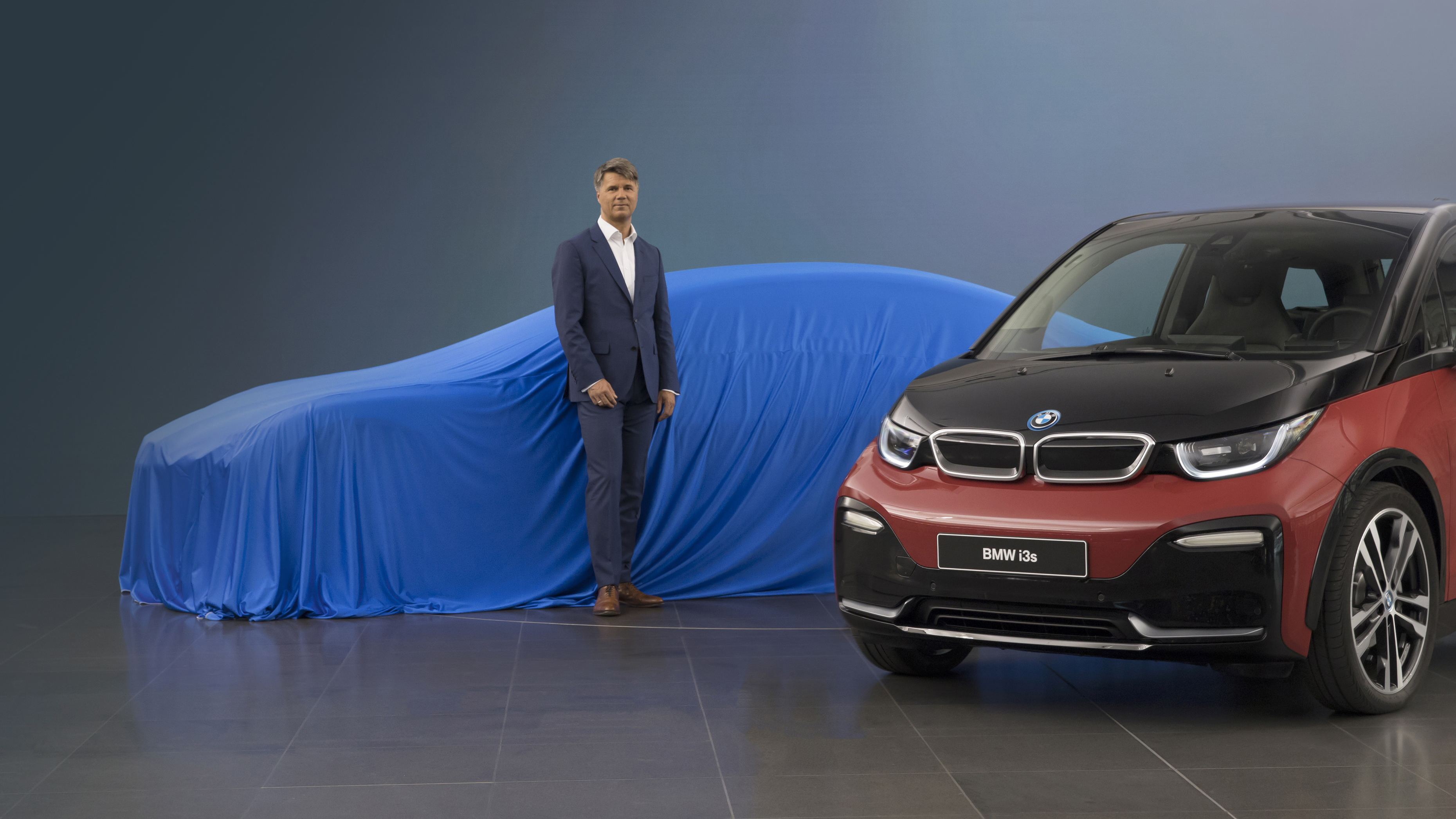
BMW's full-electric 'i5' saloon is coming
Mainstream Tesla Model 3/Model S rival is in development, full concept to be shown next week
BMW is working on a mainstream full-electric saloon. There will be a concept at the Frankfurt Motor Show next week. They won't name it just yet, but when we called it the i5 they just smile and say "that's an idea".
We've seen the car already, but under a sheet. It's a low four-door saloon with a fastback. To be clear, it's not the iNEXT, which is the crossover-shaped car BMW will launch in 2021 as its spearhead for autonomous driving.
Instead the 'i5' is a more mainstream car. Why has BMW taken so many years to launch what is in effect a Tesla Model 3 or Model S rival? BMW R&D chief Klaus Fröhlich simply says BMW wants to make money on the enterprise.
After all his company has been making electric cars since the Mini e back in 2009, and the new car will have BMW's fifth generation of battery and motor.
That gives it, he says, a range of 700km (440-odd miles) on the realistic WLTP drive cycle, or "at least 800km" on today's hopelessly optimistic test.
The 'i5' design, says Fröhlich, is strongly influenced by the Vision Next 100 concept from 2016 (pictured above). He mentions the story of the i8. Originally there was a pure concept with no production intention, called Vision EfficientDynamics. The bosses were so impressed they wanted to get it into production, and so the engineers strained every sinew to turn it into what we now call the i8.
Same with the Vision Next 100, which was originally meant to look 30 years into the future. "I liked it so much I gave the engineers and Adrian van Hooydonk [design chief] five years instead of 30 to make it reality." But the 'i5' won't get the Vision Next 100's autonomous driving; that's reserved for the iNEXT at least in the first instance.
The critical technology to make the 'i5' happen is the battery. To get the sexy low silhouette the designers wanted, while not compromising range, there had to be a new very energy-dense cell chemistry. BMW is now confident it has developed the right cells to do it.
BMW's CEO Harald Kruger also said today that by 2025 the Group will have at least 12 new standalone EVs. That includes the 'i5', the iNEXT, an electric X3 in 2020, electric Mini (2019), a motorbike and we understand a Rolls Royce too. "We are in this for the long term. I don't know if Tesla is planning 10 models," sniffs Fröhlich.
All the BMW Group platforms were designed from the start to use underfloor batteries, so all models can be adapted to electric if that's what buyers – or governments – want. That includes the mostly front-drive architecture for the Minis, and the main RWD BMW components set, and Rolls-Royce's own architecture.
Top Gear
Newsletter
Thank you for subscribing to our newsletter. Look out for your regular round-up of news, reviews and offers in your inbox.
Get all the latest news, reviews and exclusives, direct to your inbox.
The Mini and X3 use the firm's fourth-generation cells. Fröhlich told me the electric Mini will have a range at least equal to today's upgraded i3. That's a real-world 120 miles.
Trending this week
- Car Review
BMW iX3










